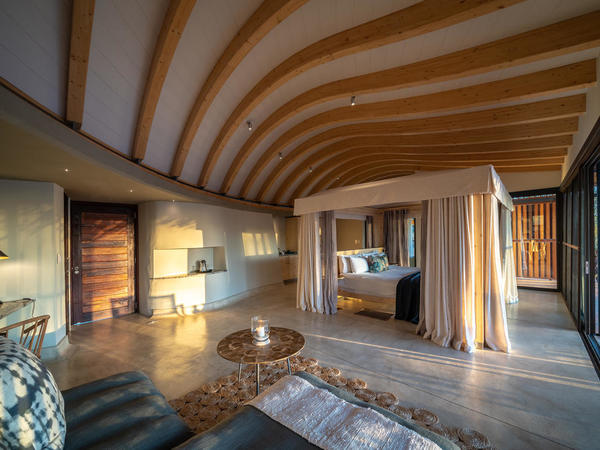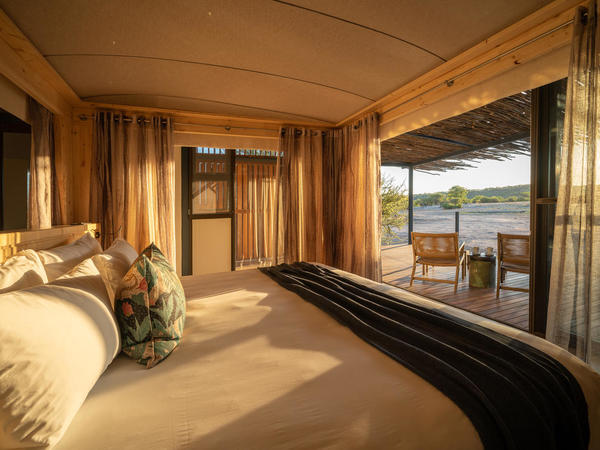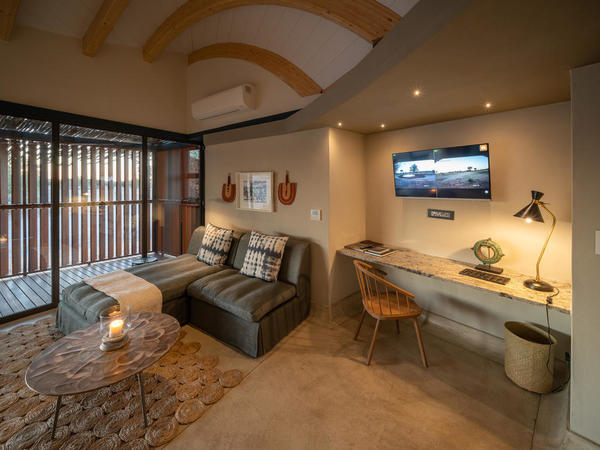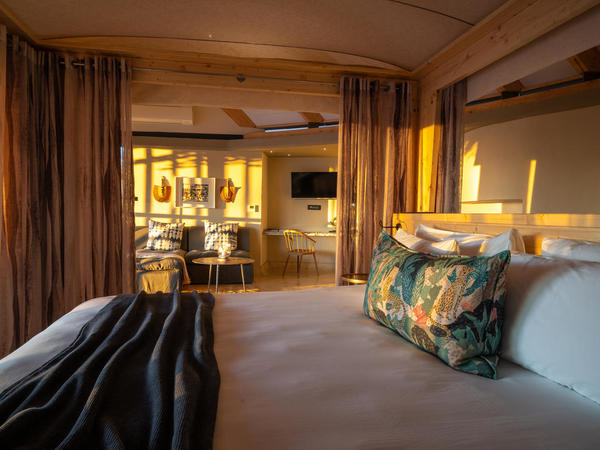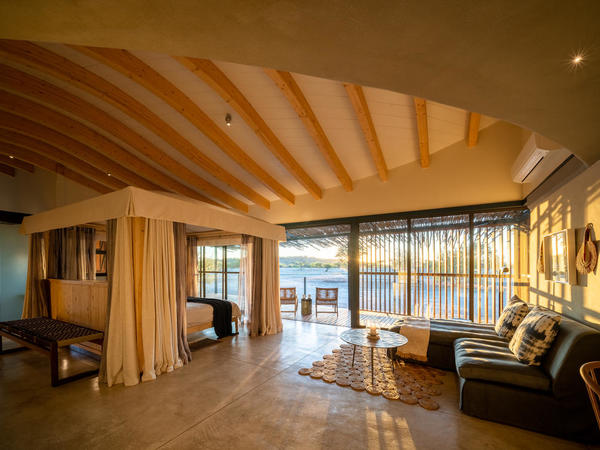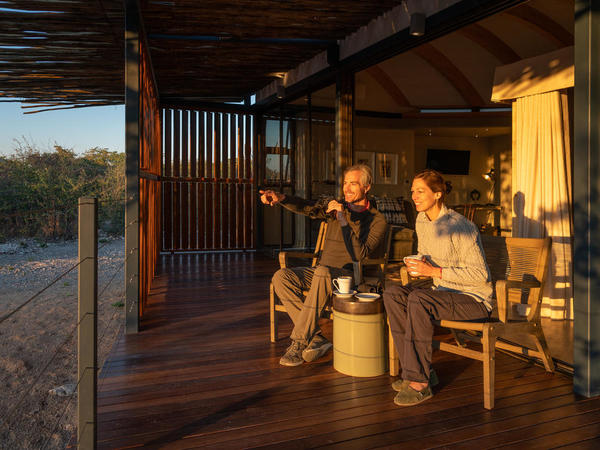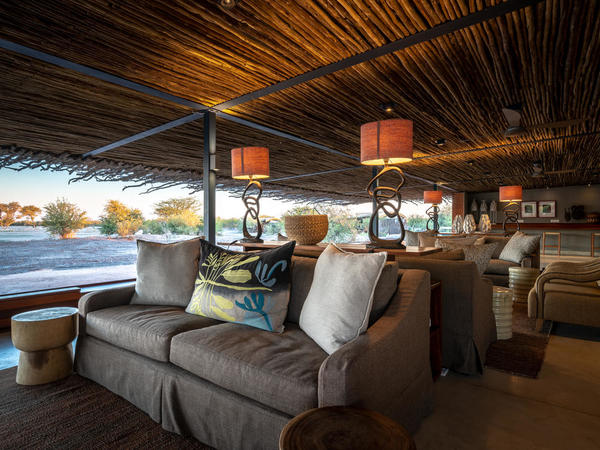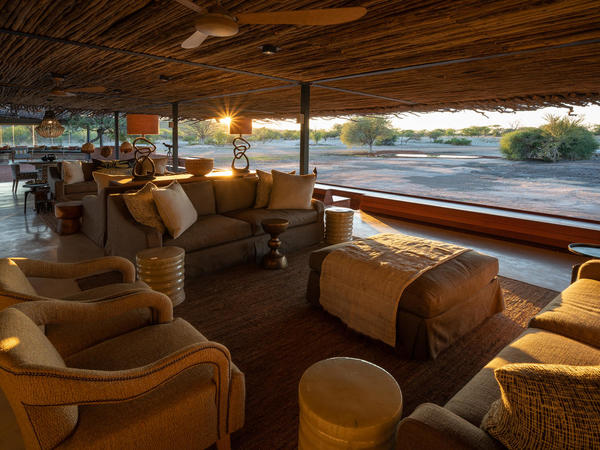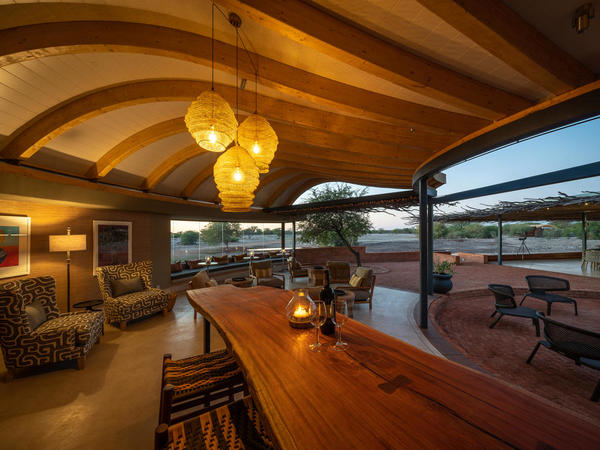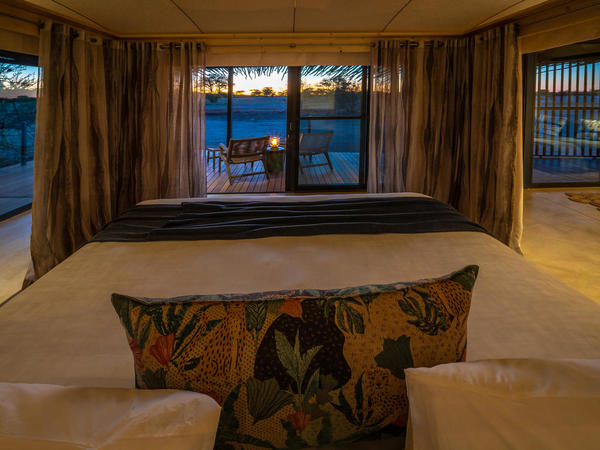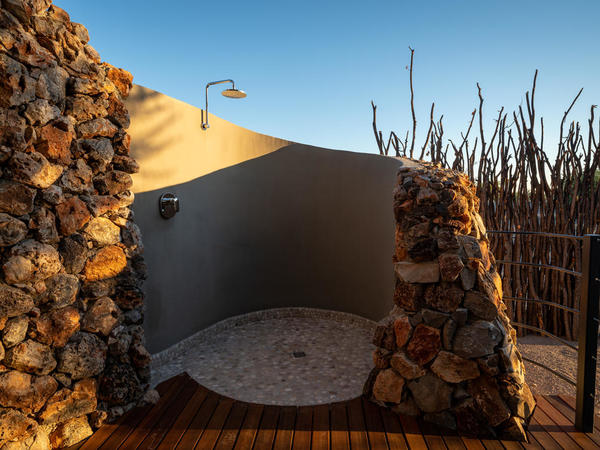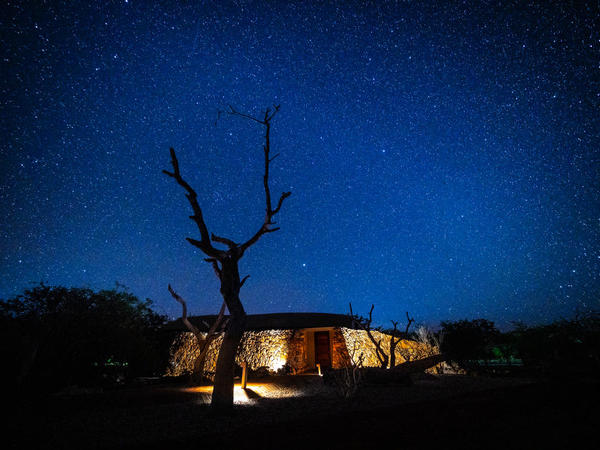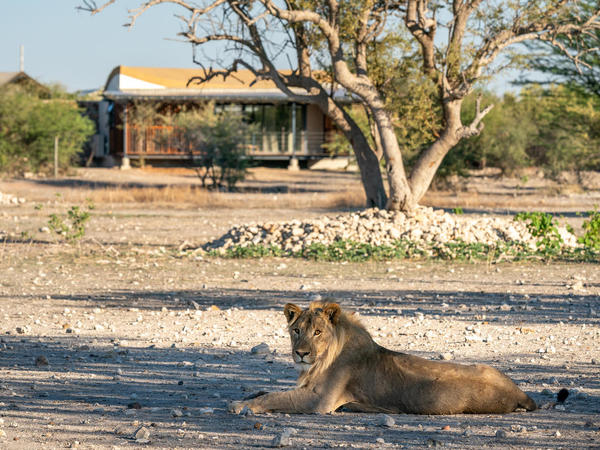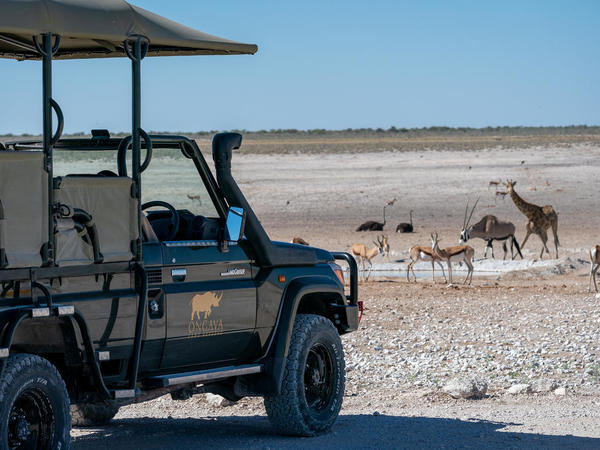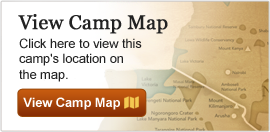Andersson's Camp
premier Camp | Etosha Nat'l Park, Namibia
| Read Reviews | Write a Review
On the boundary of Etosha National Park, amidst the wildlife-laden savannas of the Ongava Game Reserve, sits Andersson's Camp—a comfortable, modern retreat for safari-goers here to explore the impressive diversity of fauna and flora in the region. The camp is named for famed explorer Charles Andersson, who in 1851 was one of the first Europeans to set foot at Etosha Pan, the world's largest saltpan.

Our Expert Says
Andersson's Camp, located near Etosha Pan, offers basic yet comfortable and eco-sensitive lodging for environmentally conscious travelers here to visit the wonders of Etosha National Park, one of the largest wildlife parks in Africa.
– Court Whelan
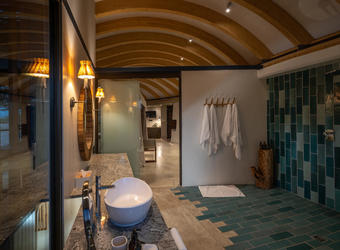
Facilities & Amenities
- En suite bathroom with indoor/outdoor showers
- Shampoo, soap, insect repellent and bug spray
- Hair dryers
- Air conditioning
- Tea/coffee in room
- 220v charging outlets in room
- In-room safe
- Wi-Fi available
- Central pool
- Laundry included
- Local drinks included (house alcoholic and non-alcoholic drinks)
- Credit cards accepted (Visa and MasterCard)
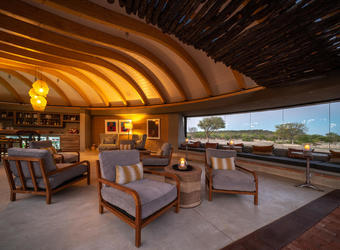
The Camp
Location: Etosha, Namibia
Number of Tents: 18
Andersson's Camp is situated near the entrance gate to world-famous Etosha National Park. The region is dominated by mopane woodland and a row of dolomite hills called the Ondundozonanandana Range, which rises up from the relatively flat landscape. The proximity of Andersson's Camp to Etosha is ideal for full-day wildlife drives into one of Africa’s largest wildlife parks. A former farmstead, the camp has recently been rebuilt as eco-sensitive lodging and provides exceedingly comfortable yet down-to-earth accommodations for small groups, families and independent travelers alike. Eight spacious suites designed as a direct extension of the landscape itself and scattered throughout the mopane woodlands, each with a private deck and 180-degree view. The rock and other natural elements are used to reflect the environment and drama of Etosha. The natural stone and solid build with innovative roof structure offers guests a climate-controlled sanctuary in the bush.
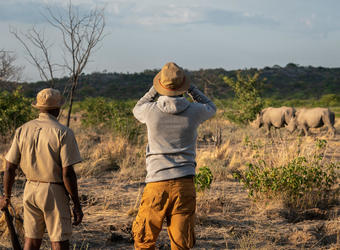
Wildlife Viewing & Activities
Etosha National Park is Namibia's premier wildlife destination, and at nearly the size of Switzerland, it is one of Africa's largest wildlife parks. Large herds of plains animals concentrate around the waterholes in the dry season, while the sporadic rainfall in the summer months produces a profusion of life. Twice-daily wildlife drives and day trips into the easily accessible Okaukuejo area of Etosha National Park are rewarding, with frequent sightings of lion, elephant, gemsbok, springbok, red hartebeest, and white and black rhino. An optional night drive can be arranged on neighboring Ongava Private Game Reserve and should be requested in camp. Nature walks are also possible when there is a walking guide available. Activities on Ongava are subject to availability of vehicles and guides and cannot be guaranteed in advance. Large animals such as elephant and lion are able to move between the park and the private reserve.
Etosha National Park and her surrounding private reserves make up the primary wildlife viewing location in Namibia, and the below chart helps to illustrate major wildlife sightings often experienced in the area. Other typical sightings may include springbok, hartebeest and a number of other mammals, birds and reptiles. Exact sightings will depend on seasonality and wildlife movements.
| Country | Park/Reserve |
Black Rhino
|
Cheetah
|
Eland
|
Elephant
|
Gemsbok / Oryx
|
Giraffe
|
Hyena
|
Leopard
|
Lion
|
White Rhino
|
Wildebeest
|
Zebra
|
|
|---|---|---|---|---|---|---|---|---|---|---|---|---|---|---|
| Namibia | Etosha Nat'l Park |
| Usually viewed | Frequently viewed | Occasionally viewed | Sporadically viewed | Rarely to never viewed |
Climate
| Month | Max | Min | Rainfall |
|---|---|---|---|
| January | 82° F | 68° F | 5.12 in |
| 27° C | 20° C | 130 mm | |
| February | 81° F | 66° F | 4.92 in |
| 27° C | 18° C | 125 mm | |
| March | 81° F | 63° F | 3.82 in |
| 27° C | 17° C | 97 mm | |
| April | 79° F | 59° F | 1.65 in |
| 26° C | 15° C | 42 mm | |
| May | 77° F | 50° F | 0.2 in |
| 25° C | 10° C | 5 mm | |
| June | 72° F | 45° F | 0.0 in |
| 22° C | 7° C | 0 mm | |
| July | 72° F | 43° F | 0.08 in |
| 22° C | 6° C | 2 mm | |
| August | 77° F | 50° F | 0.0 in |
| 25° C | 10° C | 0 mm | |
| September | 84° F | 59° F | 0.12 in |
| 28° C | 15° C | 3 mm | |
| October | 86° F | 64° F | 0.59 in |
| 30° C | 17° C | 15 mm | |
| November | 86° F | 66° F | 2.05 in |
| 30° C | 18° C | 52 mm | |
| December | 86° F | 68° F | 3.23 in |
| 30° C | 20° C | 82 mm |
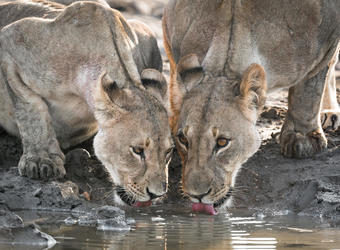
Conservation
Andersson’s Camp is located next to the Ongava Game Reserve, which was formed in 1991 when four unproductive cattle ranches were converted into a 30,000-hectare private wildlife reserve that now protects large concentrations of animals. Most general wildlife has been reintroduced onto the property, including springbok, gemsbok (oryx), blue wildebeest, Burchell's zebra, Hartmann's mountain zebra, common waterbuck, red hartebeest, southern giraffe, eland, Damara dik-dik, steenbok, klipspringer and the largest population of endemic and endangered black-faced impala outside of Etosha National Park. The reserve also has a healthy predator population, including lion, leopard, brown hyena, black-backed jackal, African wildcat, aardwolf and caracal. The most successful reintroduction initiative on the reserve, however, is the white and black rhino project; Ongava holds one of the largest rhino custodianships for the Namibian government.
Reviews for Andersson's Camp
Review Andersson's Camp